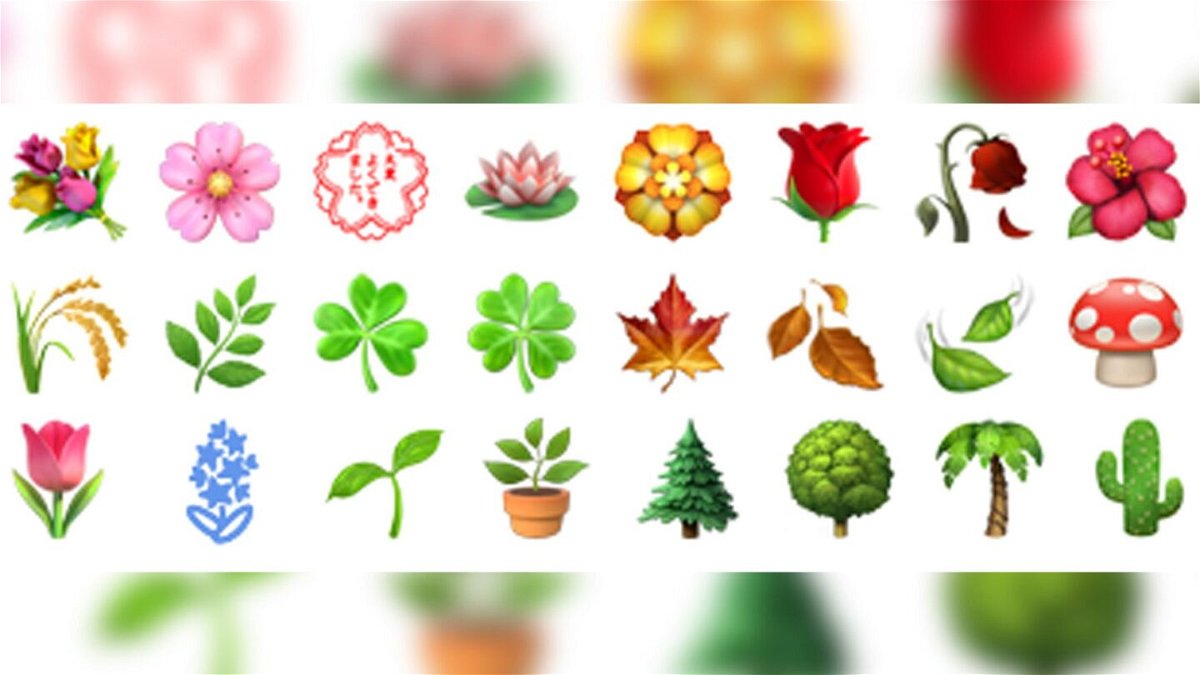Why scientists want you to have a tardigrade emoji

By Faith Karimi, CNN
(CNN) — Italian ecologist Francesco Ficetola was at a conference two years ago when it dawned on him that emojis can help power global conservation efforts.
Ficetola does a lot of research on salamanders. But with no salamander emojis available, it’s hard to send a quick message to his colleagues when he’s busy.
He realized he was not alone during the ecology conference, when an aquatic fungi expert lamented the lack of a digital icon for the microscopic organism.
So Ficetola and his colleague, Stefano Mammola, started working on a comprehensive survey of the animal and nature icons on Emojipedia, the global library of emojis widely recognized internationally. Their effort included finding how much of it represents the Earth’s “tree of life” — a metaphor and model that groups living entities and maps their evolutionary relationships.
Their research, published Monday in the journal iScience, highlights what they called a bias in biodiversity research.
The study found that animals are better represented on Emojipedia, compared with plants, fungi and other organisms.
Though humans tend to have more empathy for living things that are closer to them, the results were concerning, Ficetola said. With people constantly on their phones, the scientists said, ensuring the emoji biodiversity of animals and organisms helps create awareness about unknown species — and efforts to save them.
“Communication is the first step. If people are aware that organisms exist, they start to appreciate them. And it’s much easier to communicate the importance of conserving them,” said Ficetola, a professor in environmental science and policy at the University of Milan.
“We as researchers or people who work on animal biodiversity, we use emojis often for our communications. And when we realized that plenty of animals are not (in the emoji library), we started to ask, what is missing or why is it missing?” Ficetola told CNN. “This was important to help with communication on biodiversity.”
An analysis of emojis highlights biodiversity bias
After a conversation with the expert on aquatic fungi, Mammola said he and Ficetola decided to conduct a quantitative analysis of emojis.
The topic may sound “a bit random,” but the results were eye-opening, said Mammola, a researcher in ecology and subterranean biology at the Italian National Research Council.
Ficetola, Mammola and a third colleague, University of Milan researcher Mattia Falaschi, studied icons that represent plants, animals and nature on Emojipedia.
They found that the emojis represent 112 distinct organisms, including 92 animals, 16 plants and one “toadstool-like fungus.” But very few of the emojis featured marine animals, even though 70% of the planet is the sea, Ficetola said.
The study showed that animals and vertebrates are overrepresented, while plants, fungi, microorganisms and arthropods such as spiders and scorpions are underrepresented. Some species such as starfish, water bears — tiny aquatic animals also known as tardigrades — and flatworms were completely overlooked.
Ficetola said there’s an assumption that fungi are not as important, but they play a crucial role within the soil. “Life on the planet depends on fungi,” he said.
The lack of attention has a ripple effect, scientists say
It’s not surprising that large mammals such as monkeys, cats and dogs are well represented among emoji.
“There is a human tendency to be more empathetic and aware of organisms close to us, for example vertebrates, with awareness decreasing in inverse proportion to a group’s evolutionary distance from Homo sapiens,” the researchers noted in the study.
The abundance of animal emojis and scarcity of plant, fungi and microorganism emojis influences societal awareness and prioritization of species.
“Such zoocentrism in biodiversity conservation is leading to unequal attention and funding for plants and fungi compared to animals, despite the fundamental ecosystem services afforded by these organisms,” the study noted.
Even among animal emojis, there was imbalance. Vertebrates, including mammals, birds, reptiles, amphibians and fish, represented 76% of available animal emoji taxa.
At just 16%, arthropods were the second-most represented organism in the emoji library, even though they’re the most biodiverse group of the tree of life, according to the study.
But even with the shortcomings in emoji diversity, the study highlighted a positive note: The number of animal and nature emojis has more than doubled in the past eight years, with a current total of 214 available on Emojipedia.
The coauthors hope the study will provide a lesson that emoji biodiversity is more than just lions, monkeys and pandas.
Ficetola said they’ve not reached out to the Unicode Emoji Subcommittee, which determines what emoji should be added. But he hopes the study pushes people to rethink biodiversity communication in the digital era and the emoji tree of life. The committee, he said, uses strict criteria based on popularity and interest.
On its website, the subcommittee said it reviews proposals for new emojis and makes decision based on various factors, including usage level, compatibility with existing social media platforms and distinctiveness.
But if he had a choice of two emojis to add immediately, Ficetola said he’d pick the starfish and tardigrade.
His colleague, Mammola, said his choice would be fungi or a moss. “It’s a group that’s very popular, but is not there,” he said of the latter, a nonvascular flowerless plant in the Bryophytes family.
Emojis may seem like a mundane form of communication, scientists said, but their simplicity and immediacy are important for documenting biodiversity and conservation efforts as some animals go extinct and disappear from collective memory.
The-CNN-Wire
™ & © 2023 Cable News Network, Inc., a Warner Bros. Discovery Company. All rights reserved.